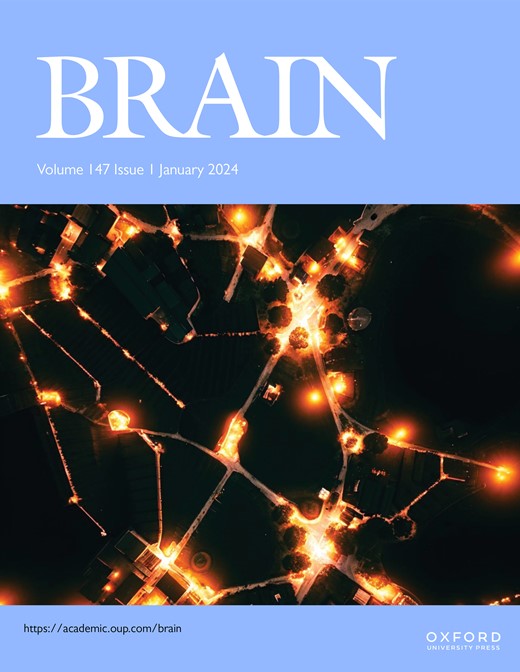Are brain arteriovenous malformations congenital or developmental? Evidence from paediatric age data.
IF 10.6
1区 医学
Q1 CLINICAL NEUROLOGY
引用次数: 0
Abstract
The natural history of pediatric brain arteriovenous malformations (AVMs) remains uncertain, particularly regarding their origin (congenital versus postnatal) and risk of rupture. This study analyzes age-related patterns in AVM presentation from a single quaternary referral center. A retrospective review of 275 pediatric AVM cases from 2009-2022, was conducted using radiological, surgical, and hospital records to identify age at first hemorrhage and associated AVM characteristics. Two mathematical models were developed: (i) a congenital model with a variable age-dependent rupture risk, and (ii) a postnatal model of AVM development, assuming age-dependent variable incidence and a constant rupture rate. Data were normalized to institutional age-based presentation rates. Hemorrhagic presentation peaked between ages 7 and 14, before declining sharply, a trend which remained after normalization. A congenital model with age-dependent rupture rate accounted well for the empirical distribution, while the postnatal model overpredicted adolescent hemorrhage and could not account for the observed decline. However, the rising distribution of asymptomatic AVMs with age suggests that a purely congenital model is implausible. The study supports a model where pediatric brain AVMs are largely postnatally acquired, though likely very early, with age-dependent varying annual risk of rupture peaking at age 13, before declining to an adult risk rate.脑动静脉畸形是先天性的还是发育性的?来自儿科年龄数据的证据。
小儿脑动静脉畸形(AVMs)的自然历史仍然不确定,特别是关于其起源(先天性与产后)和破裂的风险。本研究分析年龄相关的AVM表现模式,从单一的四级转诊中心。回顾性分析了2009-2022年275例小儿动静脉畸形病例,通过影像学、外科和医院记录来确定首次出血的年龄和相关的动静脉畸形特征。建立了两个数学模型:(i)一个具有可变年龄依赖破裂风险的先天性模型,以及(ii)一个假设年龄依赖变量发生率和恒定破裂率的AVM发育的出生模型。数据被归一化为机构基于年龄的呈现率。出血表现在7岁至14岁之间达到高峰,然后急剧下降,正常化后仍有趋势。与年龄相关的先天性破裂率模型很好地解释了经验分布,而出生后模型高估了青少年出血,不能解释观察到的下降。然而,随着年龄的增长,无症状AVMs的分布越来越多,这表明单纯的先天性模型是不可信的。该研究支持一种模型,即儿童脑动静脉畸形主要是在出生后获得的,尽管可能很早,随着年龄的变化,破裂的年风险在13岁达到峰值,然后下降到成人的风险率。
本文章由计算机程序翻译,如有差异,请以英文原文为准。
求助全文
约1分钟内获得全文
求助全文
来源期刊

Brain
医学-临床神经学
CiteScore
20.30
自引率
4.10%
发文量
458
审稿时长
3-6 weeks
期刊介绍:
Brain, a journal focused on clinical neurology and translational neuroscience, has been publishing landmark papers since 1878. The journal aims to expand its scope by including studies that shed light on disease mechanisms and conducting innovative clinical trials for brain disorders. With a wide range of topics covered, the Editorial Board represents the international readership and diverse coverage of the journal. Accepted articles are promptly posted online, typically within a few weeks of acceptance. As of 2022, Brain holds an impressive impact factor of 14.5, according to the Journal Citation Reports.
 求助内容:
求助内容: 应助结果提醒方式:
应助结果提醒方式:


